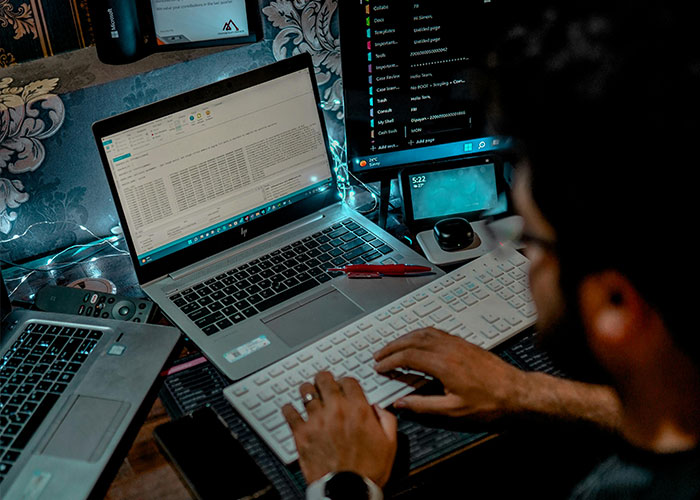Do you still believe artificial intelligence (AI) is a futuristic technology? In the last few years, AI has become a part of organizational growth and efficiency. AI helps various departments, including sales, HR, finance, operations, and marketing, by speeding up workflows, automating data processing, enhancing customer experience, and forecasting and analytics.
While AI has numerous advantages and a high potential, not all employees have adapted to it successfully. This creates a gap in skills. But training all employees can be quite expensive, no matter the size of your organization. This is where hiring overseas virtual assistants can be advantageous.
These professionals work with multiple companies across different countries and various requirements. Thus, it becomes essential for them to become well-versed in AI. This article explores why integrating both AI and remote virtual assistants is essential for your business success and how to make it work seamlessly:
Table of Contents
Why is AI Essential for Every Business?
The AI technology market is projected to reach 244 billion U.S. dollars in 2025. This vast number shows the importance of AI in today’s business world. Whether you run a small e-commerce store or a multinational company, the potential of artificial intelligence is huge.
- Data-Driven Decision-Making: At some point, business needs to make decisions focusing on future growth. This decision should be based on data to avoid failure. AI tools analyze vast amounts of data faster than any human team and provide accurate insights for sales forecasts, inventory planning, or customer behavior analysis.
- Automation of Repetitive Tasks: Regular repetitive tasks consume a lot of time. But they are mandatory. From scheduling emails to processing invoices, AI reduces manual workloads, so your teams can focus on high-value work.
- Improve Customer Experience: Chatbots and AI-driven CRM systems help businesses deliver personalized and instant customer support. However, that doesn’t mean you can completely cut down on human resources.
Read the full article on why you need human VAs: Virtual-Assistant-vs-Chatbot
Current Organizational Challenges in AI Integration
While AI is taking over every industry, there is one common challenge that every organization faces: a lack of internal expertise. Here are a few scenarios:
- There is a common misconception amongst employees that AI will take over their jobs. This leads to internal resistance and a fear of technology.
- Tools often get used as “toy chatbots” rather than strategic productivity levers. Many senior staff members don’t know how to set up workflows between different AI-driven systems.
- Even several new employees are not aware of prompt engineering, context setting, or best practices for AI interactions. They struggle with prompt engineering for generative AI tools like ChatGPT or Midjourney. Their lack of hands-on experience with AI-based automation platforms slows down productivity.
- While AI helps to process information faster, it may not always be accurate. Employees unfamiliar with data-cleaning techniques necessary for AI accuracy often end up with misleading information. Overseas virtual assistants are proficient in different technologies and can help businesses maintain accuracy and efficiency while using AI.
Why are Overseas Virtual Assistants the Solution?
Overseas Virtual Assistants (VAs) don’t just help with administrative support. They have far exceeded the limitations and can now assist with numerous fields. Especially, AI-powered virtual assistants bring immediate expertise without the need for lengthy training or onboarding. Here are a few reasons why businesses should hire an experienced AI personal assistant:
1. Strong AI Literacy & Hands‑On Practice
The nature of being an overseas virtual assistant demands constant skill upgrade. As business requirements change with the introduction of new technologies, online personal assistants are increasingly savvy with AI tools and training platforms. Many of these virtual assistants often serve international clients daily, with bilingual capability and exposure to AI‑enabled workflows. They are skilled at handling:
- Advanced marketing,
- Copywriting, and
- Customer support using AI supertools.
Opting for such a virtual assistance service means businesses can expect a faster workflow.
2. Scalability & Cost‑Efficiency
Overseas VAs offer round‑the‑clock coverage, and at far lower staffing costs than domestic hires. Companies don’t have to worry about ballooning budgets with AI-powered virtual assistants. They don’t need a long onboarding process, as they are used to working with different clients and can easily adjust to your system. Some virtual assistant agencies, like VA Talks, let you hire online virtual assistants at an hourly rate of $9.37.
3. Bridging the Training Gap
Instead of retraining in‑house employees from scratch, you can onboard VAs already fluent in prompt‑writing, AI‑tool integration, platforms like Gemini, ChatGPT, Merlin AI, or custom dashboards, cutting ramp-up time dramatically.
How to Integrate AI & Online Personal Assistants into Your Business Seamlessly?
Integrating artificial intelligence needs proper planning. Because without a plan, it will just become an expensive expenditure. A virtual assistant can bring a rhythm to your workflow. Here are a few steps to integrate both AI and an overseas virtual assistant:
Step 1: Pinpoint High‑ROI Use Cases
Businesses need to identify repetitive, rule-based operations, such as:
- Meeting summaries,
- Follow‑ups,
- Scheduling,
- Data entry,
- FAQs,
- Lead qualification,
- Report generation.
Once you know your task list, choose AI tools.
Step 2: Select the Right Virtual Assistant
Not all remote virtual assistantshave expertise in similar tools. Some might have experience in using administrative AI tools, while others may have expertise in content writing or marketing. So, choose an overseas virtual assistant who
- Is adept in AI platforms (LLMs, prompt-tuning).
- Understands English nuances and technical business communication.
- Can integrate with your technology stack, like CRM, Google Workspace, and ERP.
Step 3: Technical Setup & Governance
This step is very crucial. Connect AI tools via secure APIs and access controls to scorecards, CRM, calendar, and internal docs. You should make sure encryption and compliance with privacy standards (GDPR, CCPA, etc).
Organizations should also create a prompt library and standardized input templates. It is essential to disclose where AI authorship is used, maintain audit trails, and restrict decision-making, so there is no error.
One of the advantages of hiring an overseas virtual assistant is that they check AI‑generated content, revise, and iterate with feedback loops before delivery.
Step 4: AI-VA Hybrid Workflows
While employees believe that AI will cause job loss, data suggests otherwise. In fact, Gartner shares that 50% of organizations will realize the need for human resources along with AI by 2027.
Organizations can assign AI tools to automate high-volume tasks and let overseas virtual assistants focus on oversight and refinement. For example:
- VAs can edit AI drafts and align them with brand tone.
- AI personal assistants can interpret AI-generated analytics reports and prepare presentations.
- VA confirms attendance and AI schedules meetings and handles follow-ups.
Step 5: Iteration & Metrics
The final step of integrating AI and an overseas virtual assistant is to track service KPIs like
- Task turnaround time,
- Accuracy,
- User satisfaction, and
- AI completion rates.
Organizations can ask VAs for real-time feedback, tweak prompts, adjust models, and optimize workflow routing. VAs help to scale AI tools gradually, from pilot use to more strategic functions using agentic assistants over time.

Final Thoughts
Artificial intelligence is slowly substituting repetitive manual tasks. But without the right expertise, many businesses will struggle to implement it effectively. By hiring experienced overseas virtual assistants who are proficient in AI technologies, you bridge this gap instantly.
FAQs
Q.1. What does it mean to integrate AI and virtual assistants for business?
It means using artificial intelligence tools alongside skilled virtual assistants (VAs) to automate repetitive tasks, improve decision-making, and ensure human oversight for accuracy and quality.
Q.2. Why should I hire an overseas virtual assistant if I already have AI tools?
Even if you have AI tools, you need someone who is experienced in handling them in the right way. AI handles automation, but overseas VAs provide expertise in prompt engineering, AI tool integration, and quality control. They make sure AI outputs are accurate, brand-aligned, and actionable.
Q.3. Are overseas virtual assistants trained in AI tools?
Yes, online virtual assistants from VA Talks are proficient in AI platforms such as ChatGPT, Gemini, Merlin AI, etc. They also understand prompt writing, data management, and workflow automation.
Q.4. Will integrating AI and VAs reduce my workforce needs?
Not necessarily. AI automates repetitive tasks, while VAs provide human oversight and creativity. Together, they free your in-house team to focus on strategic work.




